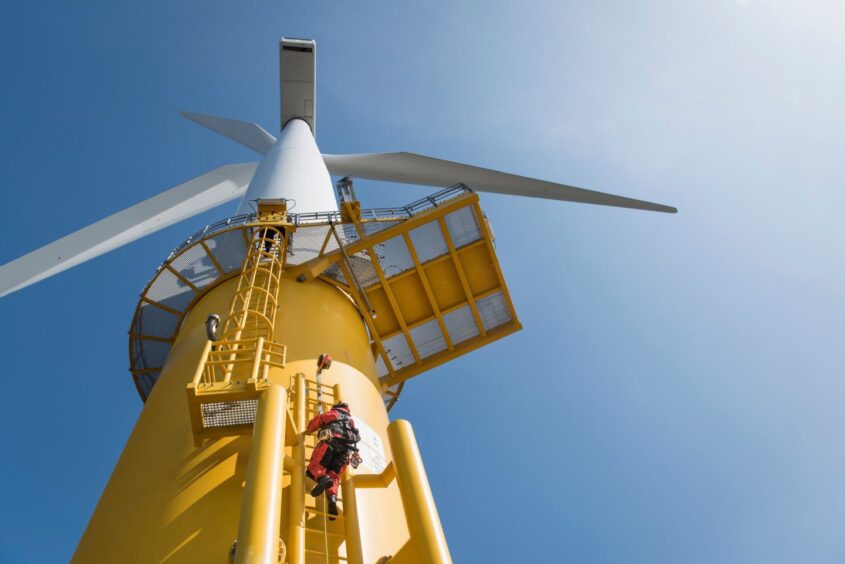
A new study into global offshore wind safety has revealed the sector has an injury rate four times higher than the offshore oil and gas sector.
Researchers from the University of Strathclyde in Glasgow also found the risk exposure to wind workers is expected to increase in the coming years due to sector growth and technology changes.
The study compared the UK offshore wind sector to the North Sea oil and gas industry in the 1970s, “which went through rapid growth and suffered from poor [health and safety] performance as a result”.
According to the study, the sector has seen an average of 30 emergency response events every year since 2014, with 40 % classed as “high potential incidents”.
Compared to oil and gas, over the past five years the offshore wind sector’s total recordable injury rate (TTIR) has been over three times higher.
Meanwhile, the offshore wind sector’s lost time injury rate (LTIR) is four times higher than the offshore oil and gas industry.
It comes after the Health and Safety Executive (HSE) issued two safety notices relating to the UK wind sector after multiple incidents caused serious injuries.
In response, unions have called for improved safety regulations for offshore wind and said the sector is “more interested in profit than workers’ safety”.
One union official told Energy Voice that offshore wind companies cannot be allowed to behave like the sector is “the Wild West”.
Offshore wind safety
The study’s lead author and University of Strathclyde PhD candidate David Rowell said while injury rates in the offshore wind sector appear to be declining, they are still “significantly higher” than in oil and gas.
“Offshore wind has some unique challenges due to the extreme weather and challenges accessing the turbines and it is also still a young industry that is rapidly growing and changing,” Mr Rowell said.
“Offshore wind work is tough, involving transferring from vessels to the turbine, climbing and moving through confined spaces to carry out maintenance tasks.”
Mr Rowell said to improve safety, the UK offshore wind sector could look to the experiences of North Sea oil and gas firms.
“The oil and gas industry is a mature industry and has learned from major accidents such as Piper Alpha to implement robust safety management systems,” he said.
“Offshore wind doesn’t have the same risk of a catastrophic incident but as wind turbines keep growing and more people work offshore there is the potential for serious accidents.”
Mr Rowell highlighted the innovative use of safety data as an area where wind firms can improve.
“For example the Norwegian oil industry publish a “trends in risk level report” which uses a combination of statistical analysis of accident data, leading indicator data and interviews to gauge if risk levels are changing,” he said.
Rapid wind growth poses safety risks
With the sector expanding into deeper waters and new technologies such as floating turbines, technicians will be travelling further from shore and in different ways.
Mr Rowell said this presents new and potentially unforeseen safety hazards.
“There are still a lot of unknowns about what floating wind key challenges could be, the effects of turbine movements on workers (i.e sea sickness), managing major maintenance activities such as heavy lifts offshore and also the activities around towing turbines to shore will all be difficult,” he said.
“As we move to deeper sites in more remote locations there could be more strain on emergency response, so the industry may need to invest more in search and rescue capabilities.”
As the sector grows, the number of offshore crew transfers is also set to increase from around 180,000 per year in 2022 to between 300,000 and 350,000 in 2030.
A recent HSE safety notice covering the gangways used to conduct transfers from service vessels to turbines highlights the risk of injury these transfers can pose.
Offshore wind safety regulation
Mr Rowell said the development of specific UK safety legislation for offshore wind would be beneficial, alongside better training and data collection.
He pointed to Norway and Australia, which are looking to adopt specific safety laws, but said the UK government does not appear to be moving in the same direction.
“The government don’t tend to get involved unless there is a major incident that attracts a lot of attention,” he said.
“The HSE are very active in the sector but have limited resources, although they have recently announced they will be implementing a cost recovery system with the industry so they can carry out more inspections.
“I think a review of legislation would be beneficial, I think industry are not keen on this due to a fear of additional administration, but if done well it could make the legislation easier to understand and a better fit for the industry.”
Unions liken offshore wind to ‘Wild West’
Speaking to Energy Voice, union officials said they are not surprised by the high injury rate within the offshore wind sector.
GMB Scotland senior organiser Gary Cook said the injury rate is likely much higher “given the failure of so many countries to provide reliable data on accidents”.
“It is likely that the accidents recorded are only the tip of the iceberg,” he said.
“The wind industry is relatively new but it is not the Wild West and companies cannot be allowed to behave like it is.”
Mr Cook said the study is a “stark reminder” of the need for unions to advocate for worker safety.
“The regulations protecting offshore oil and gas workers were developed in partnership with workers over a number of years and built on union recognition,” he said.
“Those discussions must urgently begin in wind energy.
“Unionised workplaces are safer workplaces and, right now, because of the rush to renewables too many companies are being allowed to risk the safety and lives of their workers.”
Profit over worker safety
Meanwhile, a spokesperson for the Rail, Maritime and Transport (RMT) Union said “offshore wind sector bosses are more interested in profit than workers safety”.
“Profit is considered paramount over and above everything else. This is the mindset the employers have in this sector,” the RMT spokesperson said.
Along with better pay and working conditions for workers, the RMT called for specific safety regulations to give “clear guidelines” for offshore wind.
“We cannot use a ‘one shoe size fit all ‘ approach to [health and safety]. Each sector has its own set of challenges and that need to be recognised,” the spokesperson said.
“The government needs to acknowledge this and invest in industry specific HSE inspectors.
“Failing that we end up like the bad old days of oil and gas where [health and safety] was something that didn’t happen.”
Safety lessons from oil and gas
In response to the study, North Sea safety leaders told Energy Voice there are lessons the wind sector can learn from the experiences of the oil and gas sector.
Step Change in Safety executive director Craig Wiggins said the study highlighted many of the challenges facing the offshore wind sector.
“The oil and gas sector has already faced many of the same challenges, over the last 40 to 50 years,” he said.
“It is clear there are a lot of lessons that can be shared.”
While the study highlighted some of the oil and gas safety innovations which could be adapted to offshore wind, Offshore Energies UK (OEUK) health and safety manager Graham Skinner said the sectors have vast operational differences.
Mr Skinner said offshore wind workers operate in a different environment to oil and gas workers, with sites spread across multiple individual turbines.
“There are different facilities, different first aid facilities and [it’s] ship or vessel based rather than installation based, so all of these differences need to be considered,” he said.
Mr Skinner said while wind developers could adopt measures used in the oil and gas sector, they would still need to ensure any policy adopted fits the sector’s unique requirements.
Lack of ‘clarity’ on safety regulations
Mr Skinner said another issue facing the offshore wind sector is it is currently operating under safety regulations designed for other sectors, creating a lack of clarity.
“One of the most challenging areas for us is we’ve got a huge opportunity to develop to decarbonise offshore installations by using offshore wind farms to provide energy,” he said.
“But there is a lack of clarity from the HSE around the regulatory regime that will be applied to those wind turbines, whether they fall under the safety case rigs and be treated like an oil and gas installation or whether they fall under the existing wind regulations.”
Alongside the lack of clarity on regulations covering the wind sector, unions have in the past raised concerns about the low number of HSE inspectors, with just four on-hand in the rapidly growing industry.
Currently, the HSE operates a ‘Fee For Intervention’ model for offshore wind inspectors, whereby developers pay if they are found to have breached health and safety laws.
However, the safety watchdog is proposing changes to introduce full cost recovery for HSE inspections within offshore wind and other marine renewables.
Despite the lack of regulatory clarity, Mr Skinner said he expects the safety conditions in the offshore wind sector will continue to improve.
“We have more than 50 years of experience here in oil and gas, we are always striving for the next safety improvement and [wind developers] are absolutely the same,” he said.
“The nature of their business is very different, and so those performance gains will come over time.”
An HSE spokesperson said: “Supporting a safe transition to Net Zero is one of our key priorities. It is inevitable that the rapid growth of offshore wind will bring new hazards.
“As a result of the injuries and near misses already reported to us we’ve launched investigations, carried out inspections and proactively worked with this evolving sector to keep improving standards and reduce incident rates.
“In the meantime, challenges remain in oil and gas. We will keep monitoring industry developments to ensure the regulatory regime – and our resourcing – remains fit for purpose.”

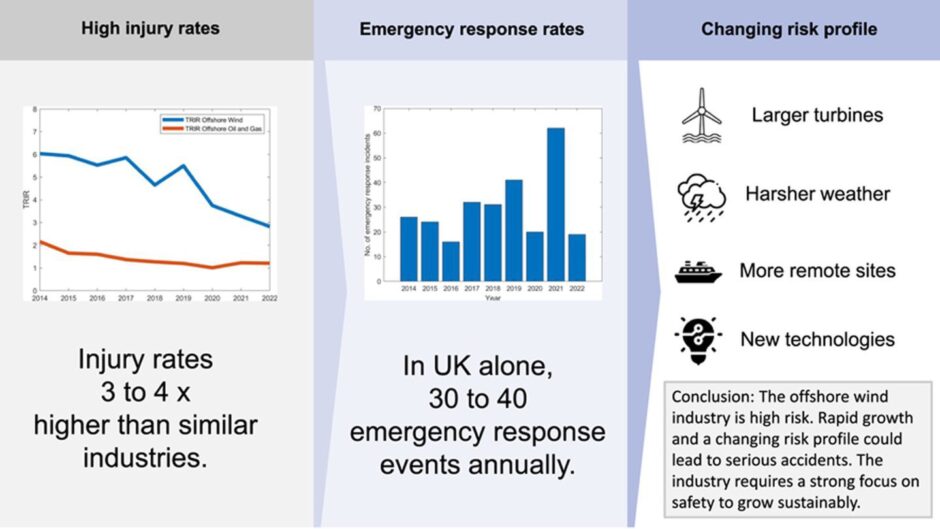
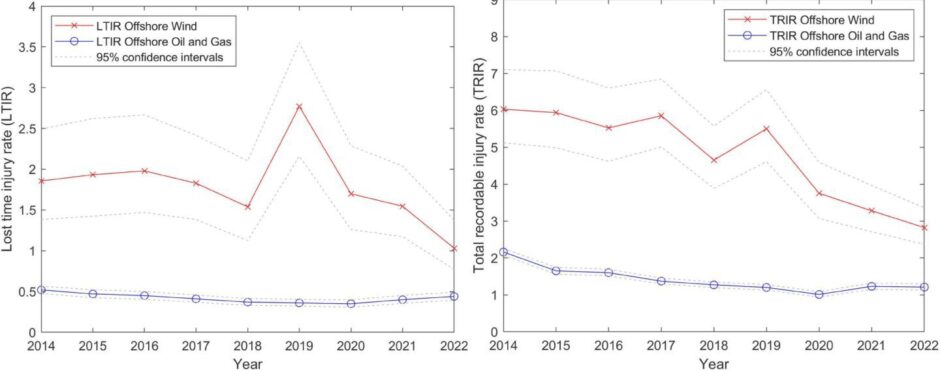
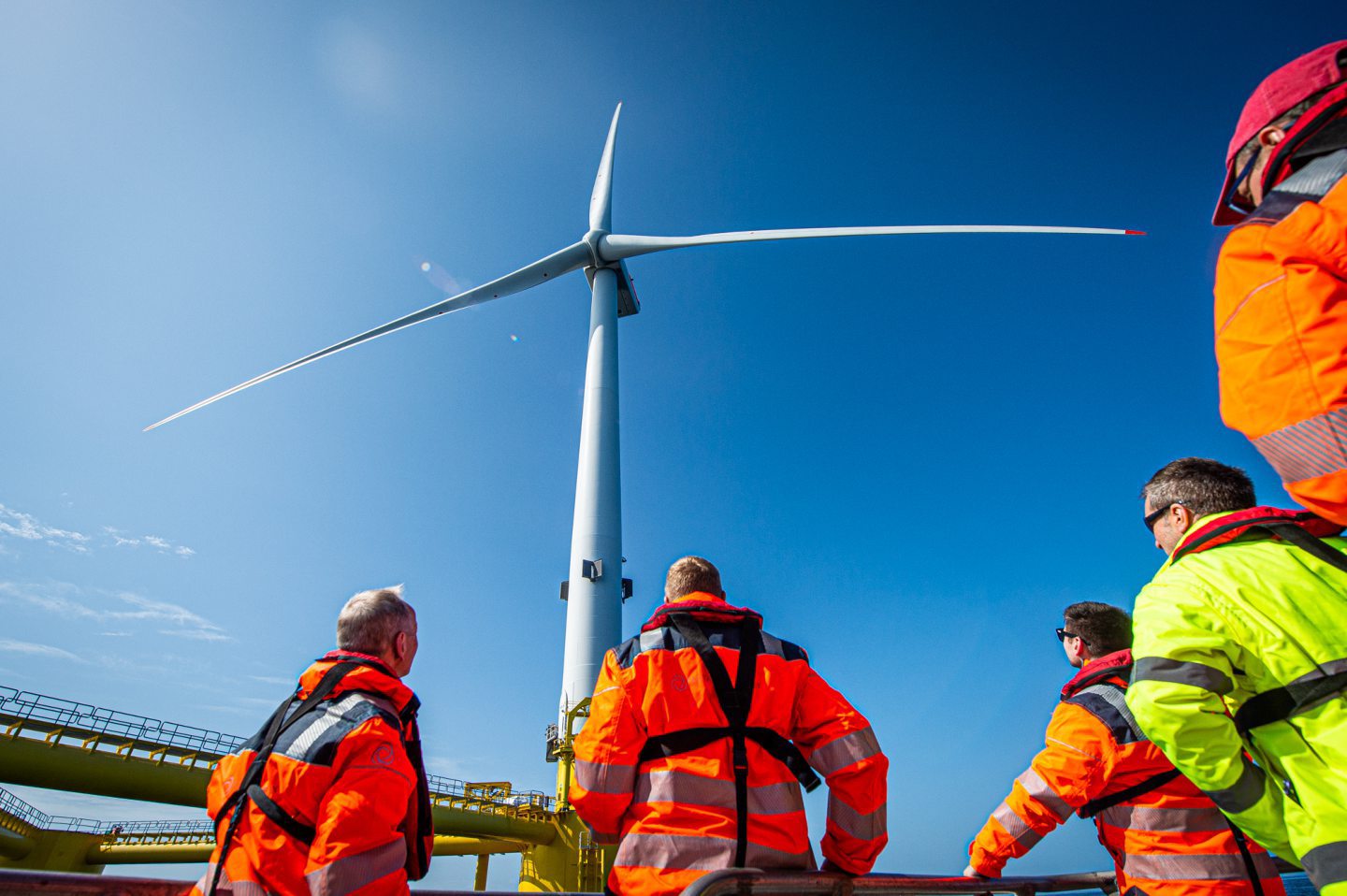 © Supplied by Wullie Marr/ DCT
© Supplied by Wullie Marr/ DCT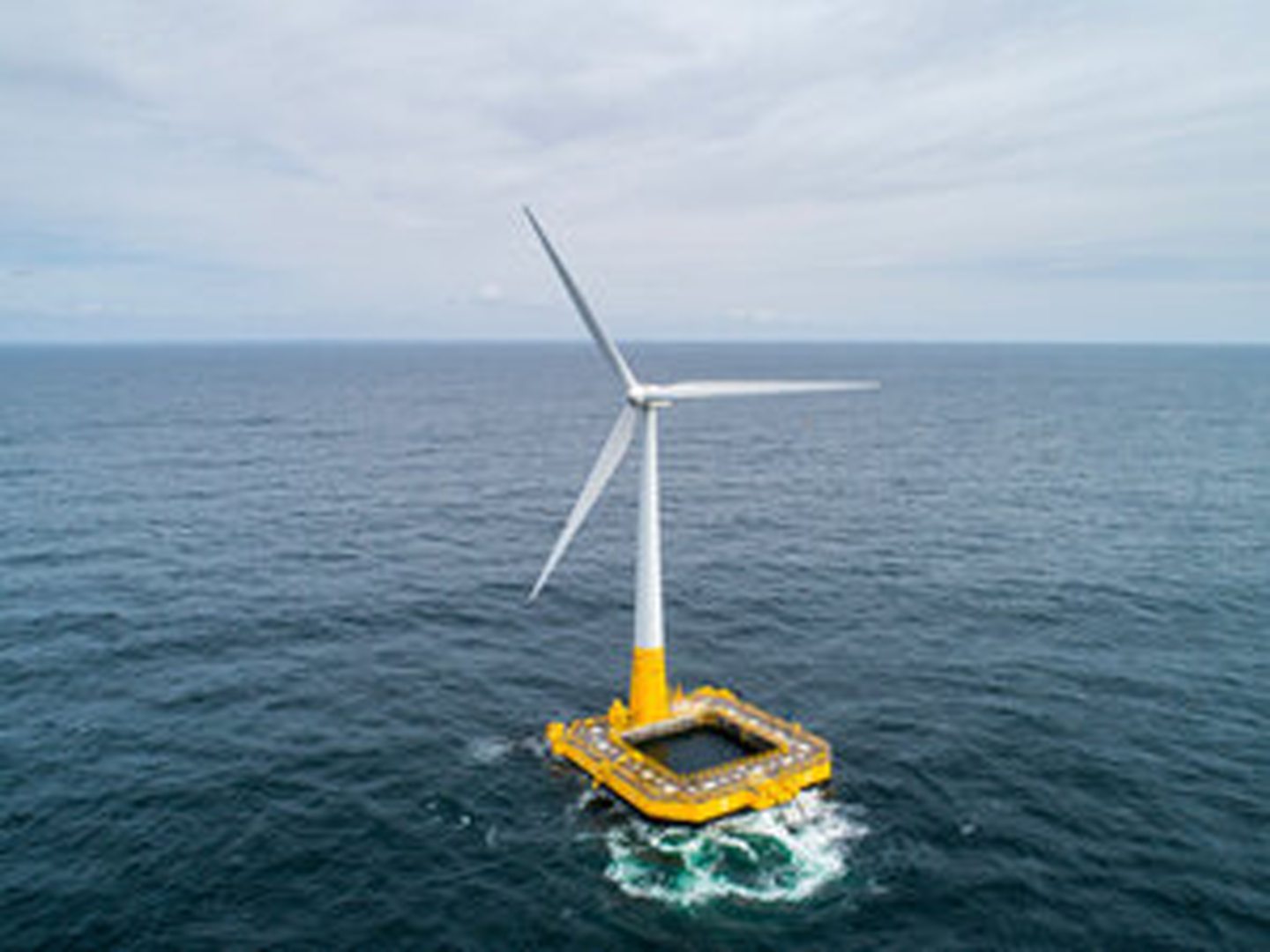 © Supplied by BW Ideol
© Supplied by BW Ideol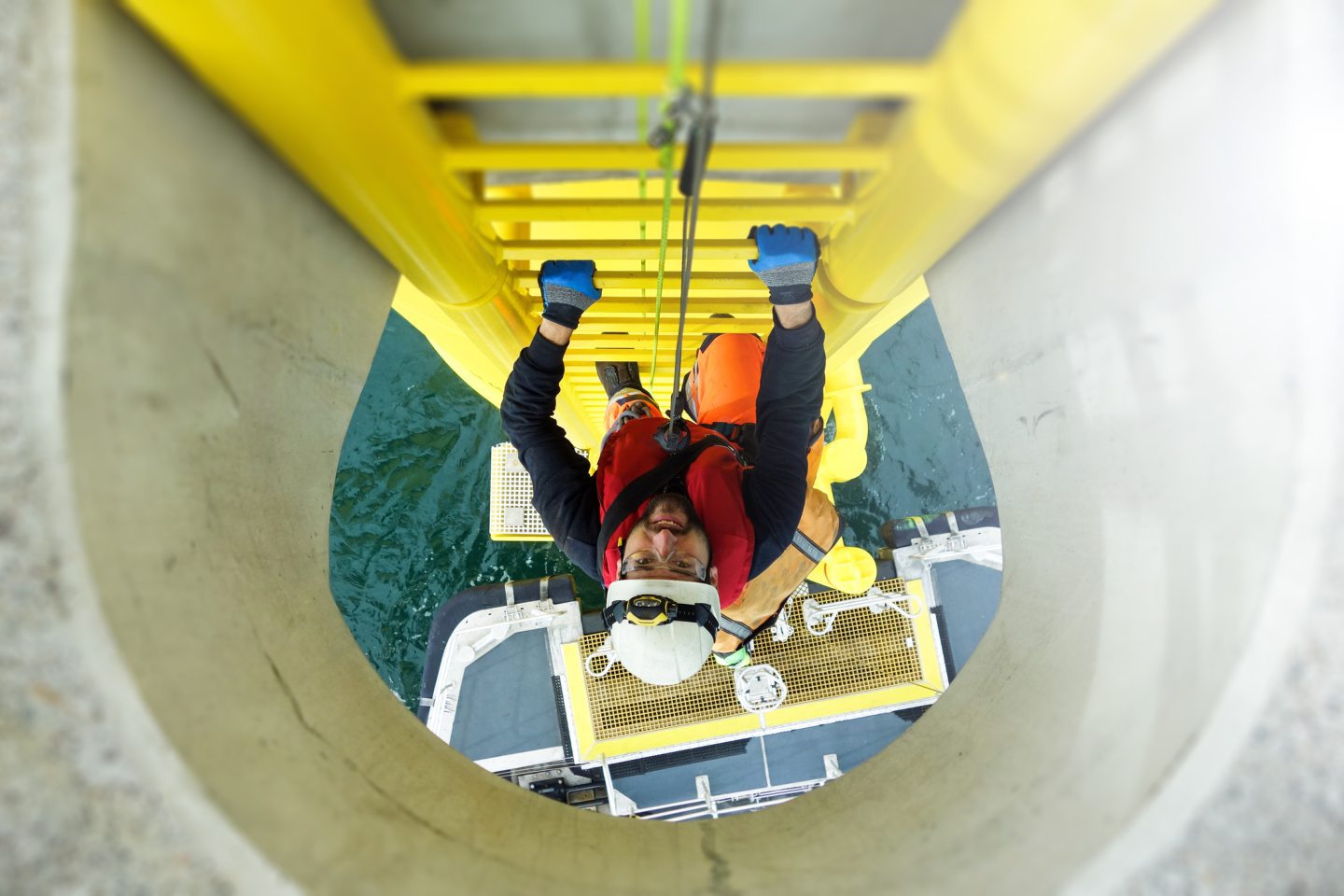 © Supplied by RMI
© Supplied by RMI © Image: GMB Scotland
© Image: GMB Scotland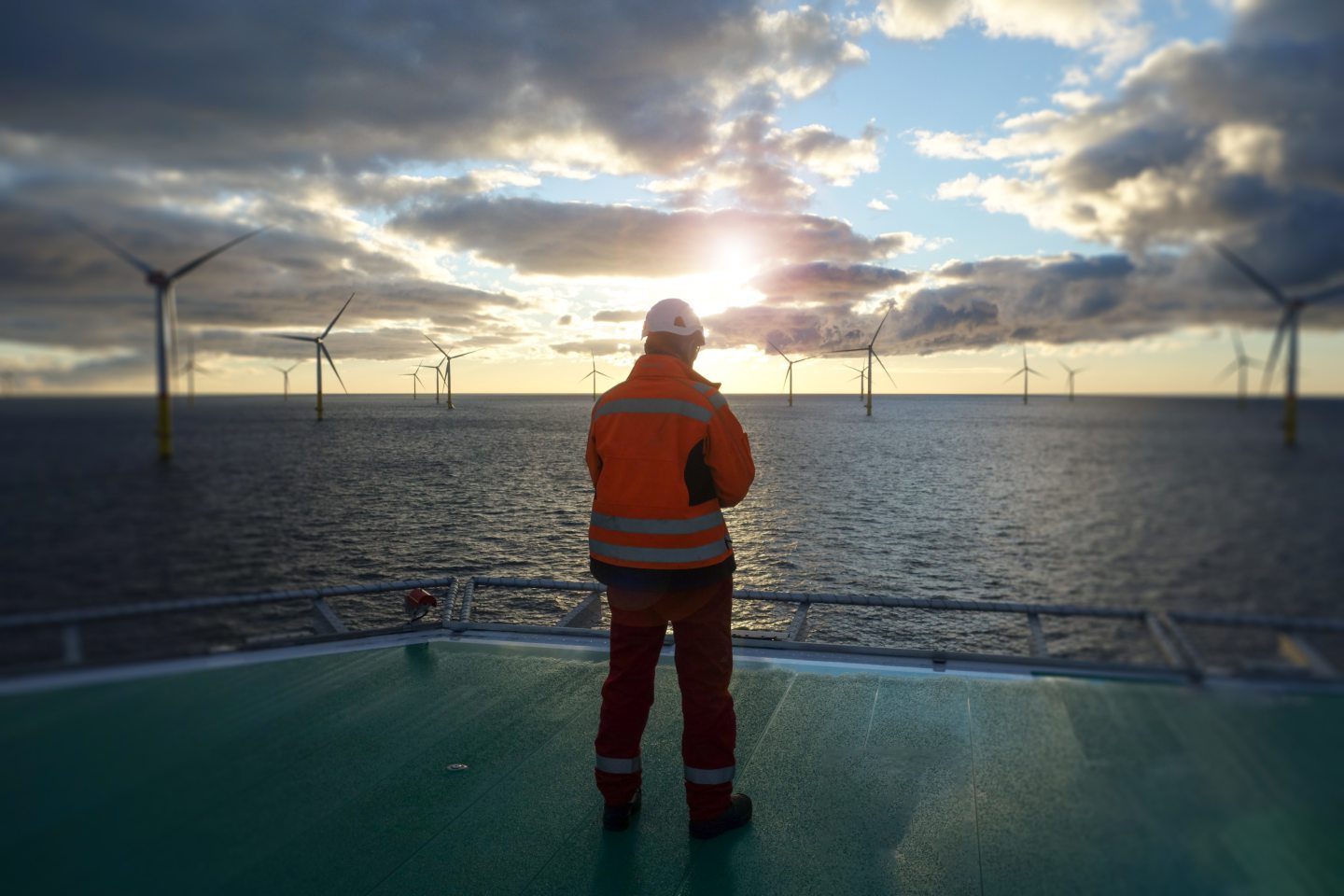 © Supplied by RMI
© Supplied by RMI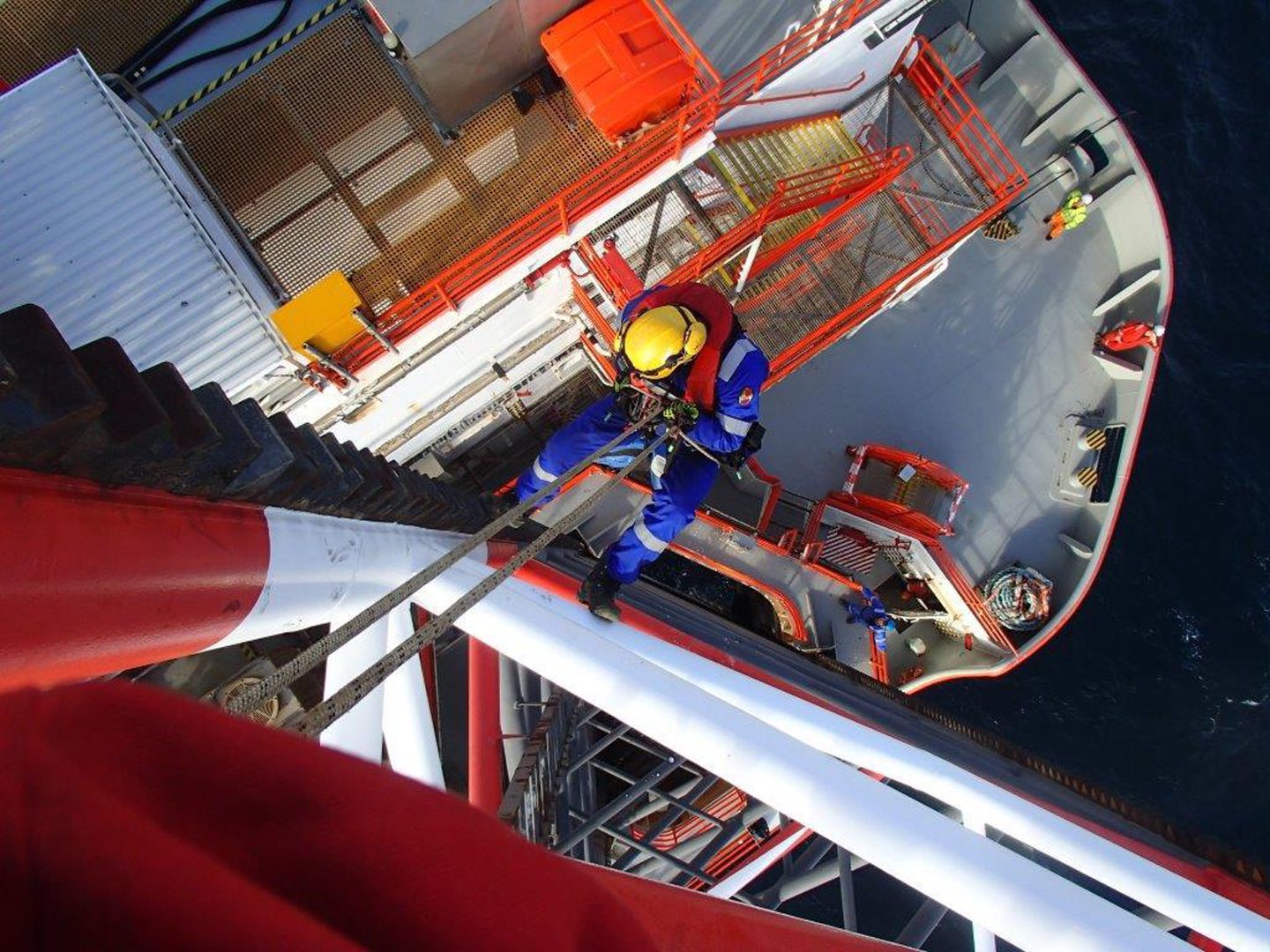 © Supplied by Dan Simpson
© Supplied by Dan Simpson © Supplied by SPE
© Supplied by SPE